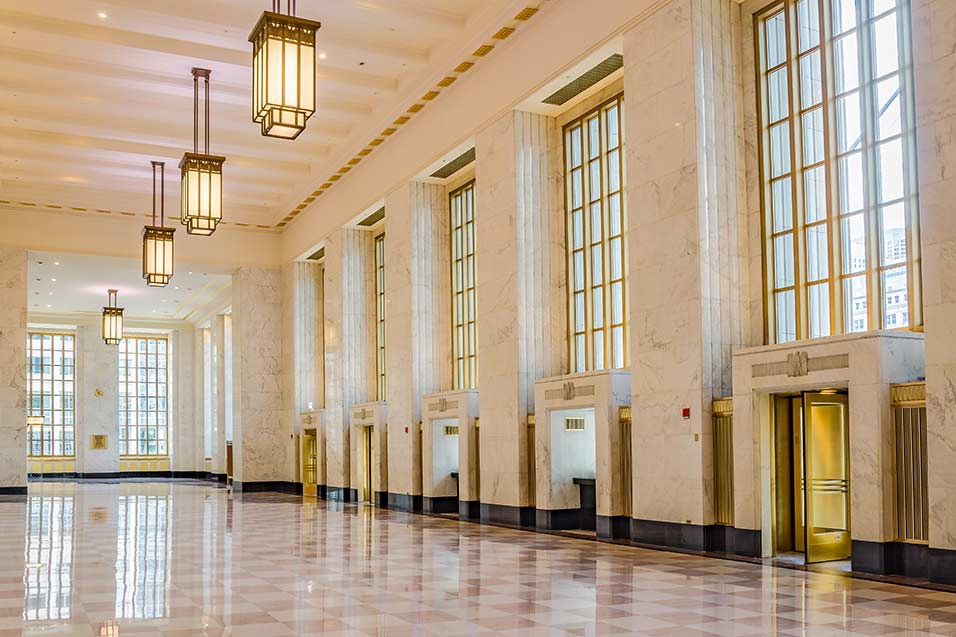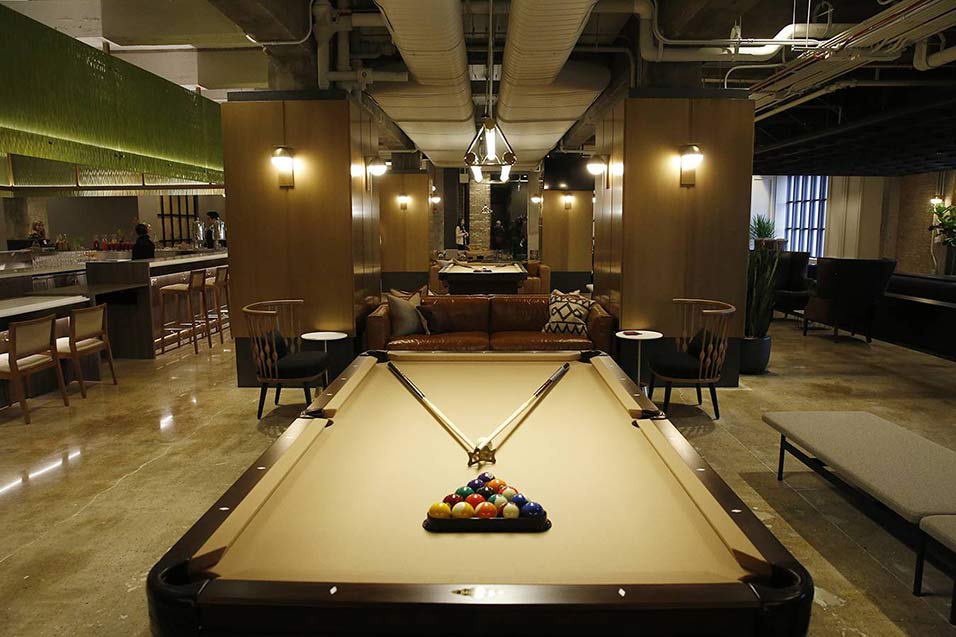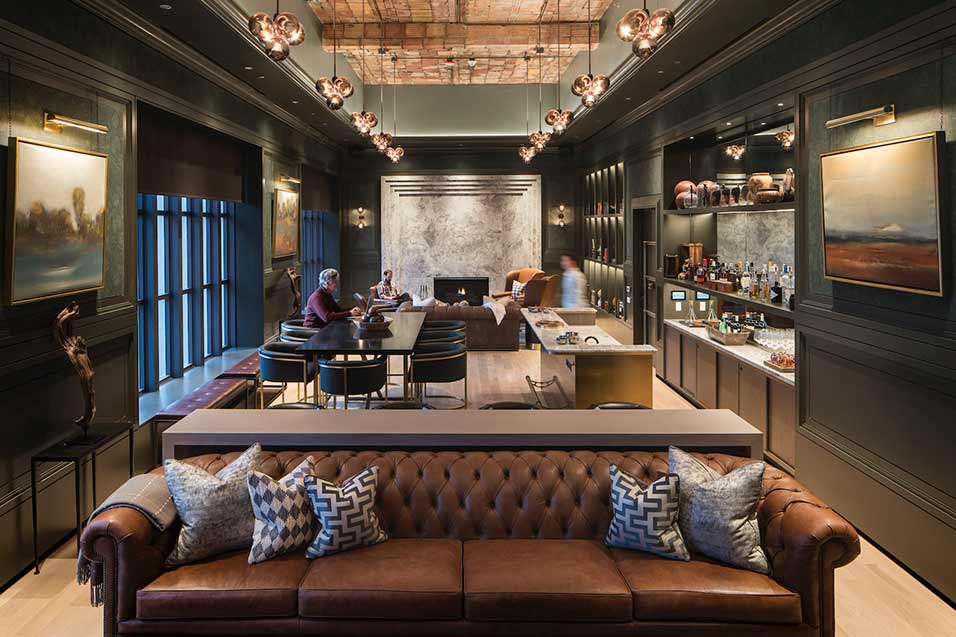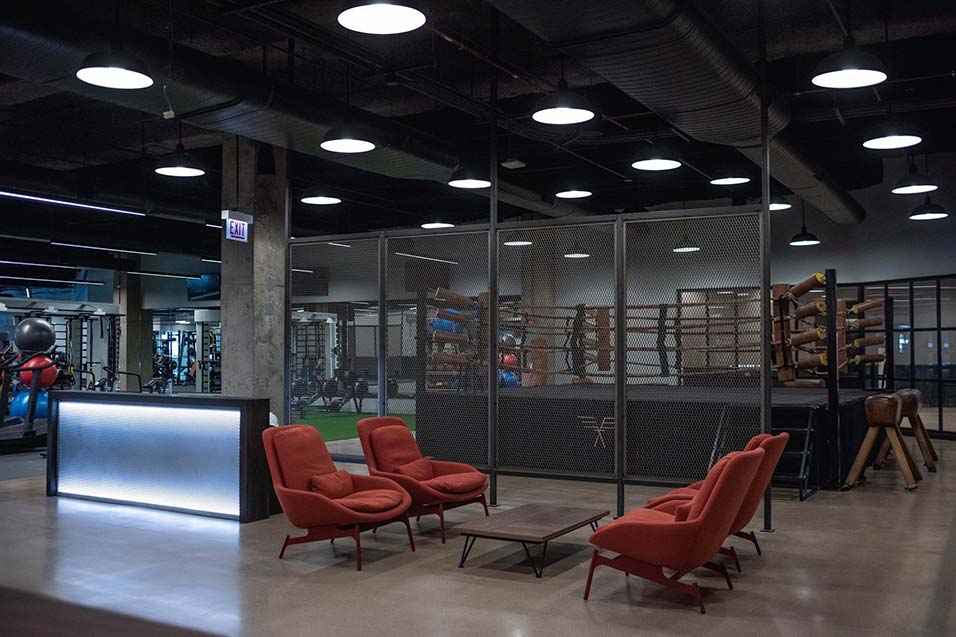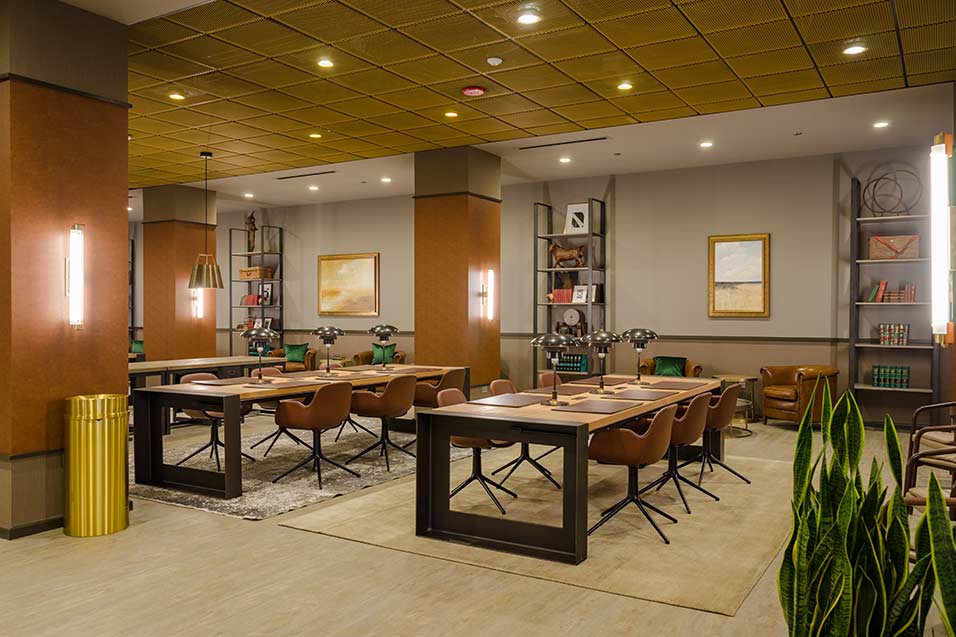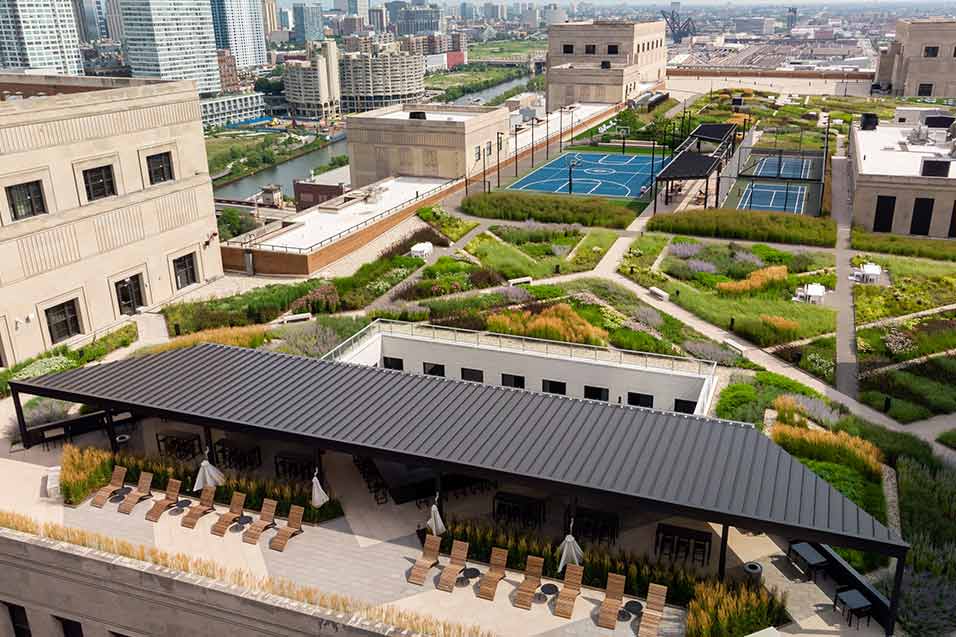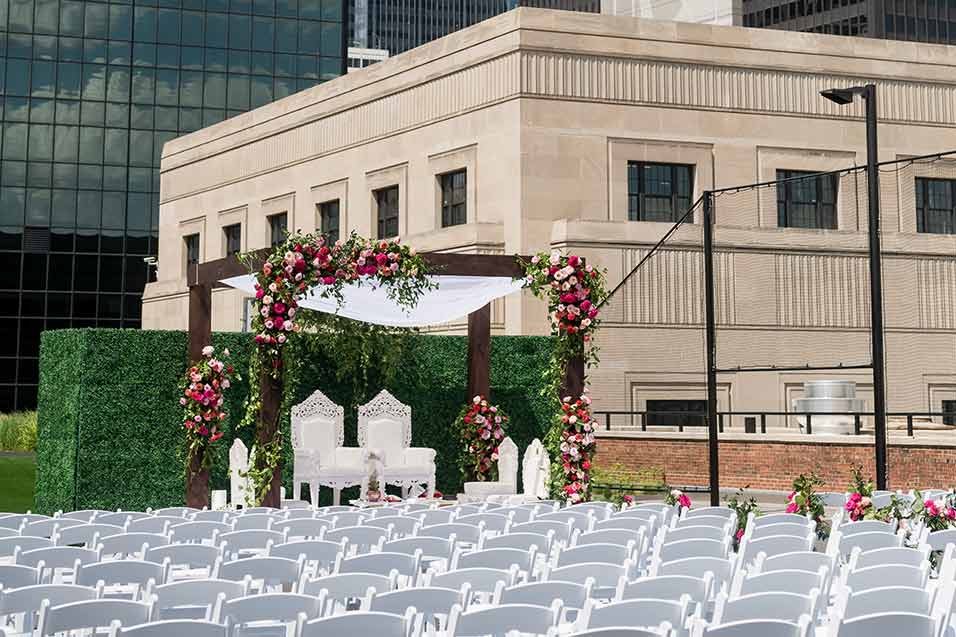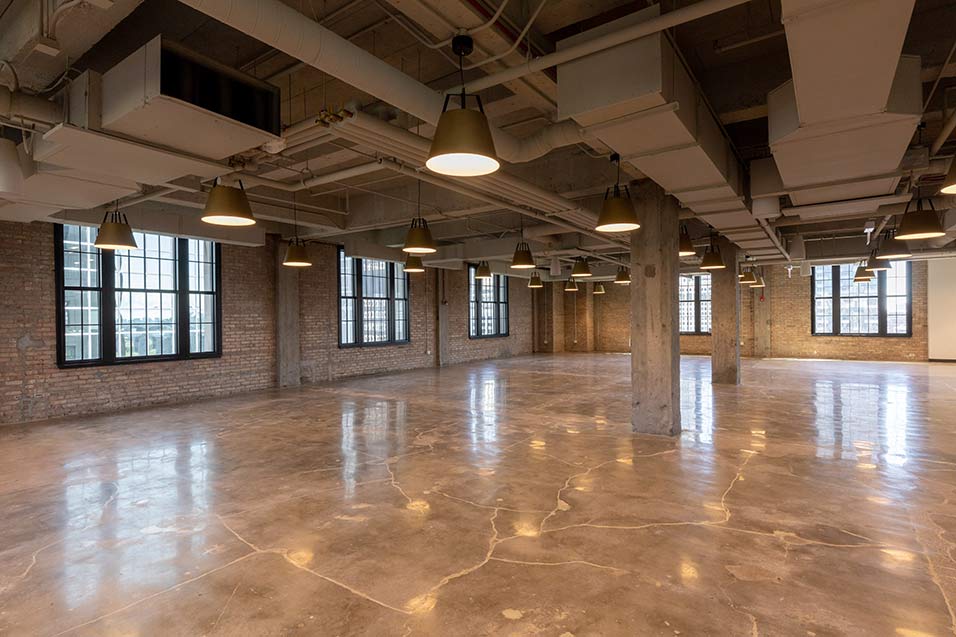The office: Elevated
Upgrade your building management with enticing tenant experiences, flexible work spaces and innovative proptech
The workplace has reached an inflection point. With the rollout of hybrid policies and the technology to support them, building owners understand that today’s tenants have the upper hand regarding how —and when—their office works for them.
In this new world, employees want the convenience and flexibility they can get from working at home yet crave the collaboration and sense of community that comes with the traditional office space.
Employees hold an unprecedented amount of power, and building owners and investors are embracing the changing needs of tenants and the idea that their preferences will fuel the new definition of an office building. Now, the office must be a destination and an experience—a reason to leave the comfort of home.
Asset, portfolio and property managers must incorporate hospitality services, amenities, sustainability and seamless tech experiences into their properties to adapt to changes in tenant demand and lure workers into the office.
Here are three things to consider as you adapt your portfolio to the unique needs of today’s tenants:
1. Design and offer cross-functional, flexible workspaces that evolve with your tenants
As tenants call for increased flexibility to meet the demand of dispersed teams and hybrid environments, flexible space can help make an asset more competitive in the market. Tenants are seeking formats that offer dynamic, turnkey, and fully reconfigurable spaces that add value for tenants.
Pandemic-related uncertainty, changes in employee preferences and tenants’ increased need for agility are driving a surge in interest for flexible space options. JLL’s 2021 Global Flex Space Report reveals that 41% of tenants expect to increase their use of flex space as part of a post-pandemic work strategy.
Right now, most offices remain largely traditional, yet 60% of corporate clients plan on having flexible space as a component of their portfolio moving forward. In fact, JLL predicts that 30% of all office space to be flexible in some form by 2030.
The sweet spot
Building resiliency based on flexibility
Owners and investors are incorporating flexibility and hospitality services into their portfolios to adapt to changes in occupier demand. But it’s not just tenants that benefit. Integrating flexible space into buildings drives foot traffic, incubates leasing prospects, and expands the amenities available to tenants.
Flex can also act as a shock absorber for future tenant needs, allowing for overflow when clients are expanding, contracting, or simply reevaluating what office space means to them. Adding flex to your asset strategy can be advantageous in that it enables you to create environments that can adapt and morph to changing occupier needs, no matter what stage of the business lifecycle they’re in.
Flex space solutions are an integral part of adaptive office portfolios. With the flex office space market poised for more rapid growth, innovative new deal structures are being introduced that mitigate risk, maximize return potential and confer greater control of space and customer relationships to landlords.
2. Activate common areas for tenant experiences that entice and engage
To attract tenants, property managers need to take a cue from the hospitality industry’s focus on how amenities can inspire meaningful relationships between people and places. Zeroing in on concierge-style experiences and superior client services improves tenant retention and acquisition efforts.
Making the office a desired destination was crucial even before the pandemic upended the way employees and tenants interact with the office.
Evolving employee attitudes and expectations mean the definition of amenities is changing. It’s not enough to provide tenant lounges, rooftop green spaces, and state-of-the-art gyms. Now, tenants and their employees expect programming, pop-ups, interactive exhibits, and community events that foster a cohesive culture of belonging.
Tenants now demand “space as a service,” an amenity- and experience-rich approach to workplaces. By focusing on the tenant experience and offering superior client services, property managers improve tenant retention and acquisition efforts.
73%of the workforce aspire to new ‘human’ places that promote a healthy lifestyle, safety and well-being.
Workplace experiences worthy of the commute
By creating engaging experiences in your asset that workers can’t access at home, employees feel like the office is worthy of their commute, time and energy.
Chicago’s Old Post Office is a prime example of how the largest adaptive reuse project in the country takes the tenant experience to the next level with sleek and spacious lounges, ample green space and a rooftop oasis. But that’s just one part of the equation. Now, landlords must consider solutions that enhance and simplify tenants’ lives.
To ease employee return to work, a growing number of office managers are using mobile apps that connect office tenants to maintenance and logistics systems, community-building programs and security features. These apps provide everything from room bookings to individualized temperature and lighting controls to maintenance and service requests.
From vacant to vibrant
Listen to this 12-minute Building Places podcast to learn more about which amenities employees desire, why they’re practical and how your building can benefit by reimagining the space.
James Cook: [00:00:00]: We're ready to get back to the office in person, but is our office space designed in a way that's going to entice our coworkers to want to join us? In other words, what kind of office environment is going to make those people who are working from home want to put on their clothes and leave their nests?
This is Building Places where we look at the world of commercial real estate through the eyes of the experts that study it every day. My name is James Cook and I research real estate for JLL. Today I'm catching up with Christina Piper.
Christina Piper: [00:00:43]: I am Christina Piper. I lead the workplace design practice for JLL.
James Cook: [00:00:49]: I want to talk about this topic of getting your employees excited about being in the office. I'm an easy sell. I'm really ready to get into the office.
Christina Piper: [00:00:58]: 72% of knowledge workers are actually looking for some sort of hybrid work arrangement, meaning some combination of time in the office, as well as remote, whether that be home or, or another space. And so we need to really understand where that's coming from. And, and a lot of it has to do with things people can get in the office that they perhaps can't elsewhere.
James Cook: [00:01:19]: I have a million examples of stuff that happened in my work only because I was in an office. Like creative collisions and crazy ideas and talking to people I didn't even know existed.
Christina Piper: [00:01:31]: Yes, absolutely. I can think of two examples even does week being in the office. Opportunities that I wouldn't have had to, first of all, teach and second of all learn. And I guess third of all, uh, opportunities, business development wise, that I was able to kind of interject myself in just by sitting in close proximity to what we call our kind of office hub. Just running into people in those spaces and, and I will deliberately inset myself there for a few hours a day. Not only to get some focus work done, kind of remove myself from that open office component, but also to, to just overhear and learn by osmosis. These opportunities happen more organically when you are in the office and you can actually get up and go to a destination space versus saying, let's hop on a Teams meeting.
James Cook: [00:02:20]: How do you get people excited to come into the office who maybe aren't that excited?
Christina Piper: [00:02:25]: We know people are interested in some degree of return to office, so let's poll them on what they're hoping to get out of it. What important aspects are they seeking out, or what can they not get in their remote work environment? And it usually entails some degree of exercise or cognitive refresh. What amenities are we talking about? The exposure to natural light. How can we really optimize our workspaces to encompass that? I think the data is there for us to extract it. We just have to be interested in asking the right questions the right way, versus throwing out a blanket mandate to say, “you're all coming back.” Because when you ask any HR professional how that works from an attract and retain standpoint, it is not successful.
James Cook: [00:03:10]: How am I designing the office to give the people FOMO? Like if they're not there, they're missing out?
Christina Piper: [00:03:17]: Yeah, FOMO is a big conversation piece and we all used to laugh but it's a real piece of the dialogue now to talk about the fear of missing out, and truthfully how we create that to get people to come back into the space.
An example that I can give recently is we're working with a client. And they've got a portfolio of different locations across the U.S. And they did all these employees surveys over COVID they recognized that their average age had gone from 27 to actually 23 and a half. So that's a huge swing in the demographic of who makes up a cross section of your organization, right? And so smartly, they did a survey to try and really understand what the younger generation is looking for in a workspace. And what they found is that these folks are very purpose driven. They attach themselves to specific design objectives or cultural shifts that have purpose behind them.
One of the biggest topics of conversation was actually gender-neutral restrooms and amenities spaces that supported wellness. And that's something that they never would have had a conversation about five years ago. Now it's a very relevant aspect. And so they never would have known that not had the insight to dive deeper and kind of say, you know what, now that our demographic has shifted we perhaps need to take a look at what our workforce generally wants. So I think it's just a great way to show you're engaged with your organization and with the people in it and showing that we're all human and there's a human aspect that needs to be focused around the physical workspace. Whether that be focused on individual meeting rooms to help cater toward individual connections with people, focus workspace. We're even bringing in more of these kind of amenity spaces. We've talked about greenhouse rooms. We've talked about onsite childcare. It's all about extracting these opinions and in shaping that data into something meaningful.
James Cook: [00:05:10]: And when you talk about wellness, what are some examples of the kinds of things companies are looking at to put into offices to promote wellness?
Christina Piper: [00:05:19]: Yeah. And this is a huge one because we're finding with several of them is many of them have told us we've never had a higher degree of wellness oriented medical claims. And it's something that employers are not taking lightly. When we talk about wellness, it means different things to different people, right? To many, it means, a degree of focus that they can bring and actually channel their energy into work and make sure that's efficient and productive work. To many physical health still reigns king. They want to come to a workspace where, you know, they're able to efficiently work, but at the same time, get access to amenities like building gyms or walking paths surrounding their environment.
When we talk about how to actually apply this in the workspace, we are not seeing that these kinds of recreational rec rooms, pool tables are coming up very often anymore. We're really talking more about cognitive recharge. When you think of your cognitive ability to get work done, it’s very sensory related, right? So looking at different types of lighting, looking at how color shapes, um, personalities, even throughout the day. One's ability to work well. Looking at ways people learn, they're all different, right? Sometimes we learn better in a group setting. Sometimes it's better with a small team and sometimes it's better on our own. So really studying, really taking a cue from the educational aspects of our business and looking at how people learn at universities. We've even had clients say that they're looking to get an in-house therapist that can be kind of an open door forum for people to have a ability to vent, or talk or, you know, truly just get a different opinion on something. And mental wellness is really one of these big-ticket items that we've been talking about lately.
James Cook: [00:07:03]: It's like the guidance counselor in high school.
Christina Piper: [00:07:06]: Yes, exactly.
James Cook: [00:07:10] A lot of people are like, yeah, I'm up for a hybrid workweek. I'll do a Tuesday, Wednesday, Thursday. So are there problems with that?
Christina Piper: [00:07:15]: I call it like the high school schedule rotation, right? Mondays and Wednesdays, you're doing this. Tuesdays and Thursdays, you're doing this. And Friday is a free day. So when we talk about this rotational type of schedule there's pluses and minuses to it. Some of the cons are that when you get people on a set schedule, particular days they're in the office, you're missing a whole different subset of interactions. Companies are getting smart and saying, “hey, as a trade-off for a flexible schedule, you, employee, need to be a little bit more flexible about your own demands on real estate.”
What we're seeing most companies do is look at some degree of a hybrid model where they are planning for about 50% return on any given day. But we are building in some flex spaces to accommodate for when there's larger regional meetings, when larger departments are trying to get together. So a lot of what's emerged from those conversations are things like community rooms, where it's a department themed room where when you're in the office, you're coming together specifically to collaborate with your team and you have a dedicated space to do so.
James Cook: [00:08:19]: Give me an example of a project that you're actually working on.
Christina Piper: [00:08:23]: Yeah, there’s a was a project we're working on now with a client. We really developed a short list of spaces that could use some improvement and to the executive’s surprise, it was actually some of the spaces that when they moved in five years ago, people were raving about, but that had become less efficient as time went on. That's not due to anything that the designers did originally erroneously. It's due to the fact that the organization was evolving and the design needed to catch up with it. And so when we were looking at this great big, amazing hub space that it's all the great things that you would imagine it's got, you know, televisions everywhere. It's this fantastic forum for when the company has company-wide meetings. But it is that for five percent of the time, right? The other 95 percent of the time we need to understand how this real estate can be better repurposed. And when we really dove in and talked to the team members, we found out that we need more flexible furnishings to facilitate different meetings for not only a different amount of attendees, but also different types of communication forums. Not every forum is this big town hall where you're going to broadcast it on every TV. A lot of these are smaller department related meetings. A lot of these are coaching opportunities, learning opportunities for smaller groups that are just seeking out a more informal casual setting to have these conversations. Another portion of the project was really understanding their green space. They have a rooftop tack, so underutilized, and here we are. We walked out on the space with them in the middle of June on this beautiful day. And we said, how many of your employees even know this space exists? And so when we polled the team it was like 50 percent of the people even knew this was accessible to them. Natural light and daylight are huge contributors to wellness. One of the things we talked to them about. Why don't we revamp the space a little bit. Let's add some different furniture. Let's throw in a fire pit, but at the same time, you leaders, you guys are the ones that need to enact policies to say, you know what? We're doing an open air meeting today. Everyone get up on the rooftop for 30 minutes. We're going to have our staffing meeting up there. So these are the types of things that when you look at space and you start to understand the way people are utilizing it, these things make a difference. And many times they're subtle.
James Cook: [00:10:45]: Christina, thank you so much for joining me for this conversation. I have, I have learned a lot and I really appreciate it.
Christina Piper: [00:10:52]: Thank you. Thrilled to be here. I appreciate your time.
James Cook: [00:10:56]: If you like this podcast, do me a favor and tell a friend about it. Let them know they can subscribe to Building Places on the iPhone podcast app, on Spotify or any place they like to listen to podcasts. This episode of Building Places was produced by Alexandra Dalton and our theme music was written and performed by Joel Caracci.
Experience management (XM) drives Net Operating Income (NOI) and leasing by creating a captivating approach that gets the most out of your amenity space. JLL’s XM experts transform spaces into activated environments where tenants can relax, re-energize, brainstorm, or break their daily routines.
3. Invest in intelligent technology that provides secure, frictionless access and streamlines operations
As the workplace is reimagined to facilitate hybrid workforces, the design and function of the office—and the properties they are in—will need to adapt, with technology playing a core role.
Offices will have to support a greater range of hybrid and work-from-anywhere models requiring robust digital connectivity and infrastructure with the capacity to adjust to new technologies, from IoT connectivity to 5G.
Technology helps asset managers transform how they acquire, manage and operate space. A successful property technology (proptech) ecosystem requires a comprehensive platform for property management, delivers services critical to asset performance, and provides intelligent insights to improve key performance metrics.
Utilize AI to decrease operating costs and increase sustainability
Creating places that support the safety, health and well-being of workers is a top priority for leading occupiers and investors. At the same time, carbon reduction and efficient operations are a business, regulatory and planet imperative.
An in-depth understanding of how workplaces are being used will help inform strategic decisions around portfolio optimization and the planning and organizing of space. This will require technology for monitoring how space is being utilized, benchmarking this information and communicating key insights in an accessible way.
Harness the power of data to ramp up sustainability efforts
There is mounting pressure from all stakeholders in the real estate industry to contribute to lower-carbon and more resilient buildings and cities. With building operations contributing 28% of global GHG emissions, managing energy performance in existing buildings will be essential in meeting net-zero carbon commitments from investors, tenants, landlords and governments.
Tracking energy performance and operational data is the first step in managing building sustainability. Advanced proptech, capabilities enable much more granular and automated management of building operations. These include dynamic lighting and heating, predictive space management, and predictive maintenance that can reduce costs and prolong the useful life of a building's working parts.
As property owners sharpen their focus on implementing sustainable solutions that also improve tenant experience, new AI-powered platforms are emerging to help clients operate more sustainably with improved energy efficiency, air quality, and tenant comfort. These platforms solve many of the commercial real estate industry’s property management woes, ultimately delivering increased NOI to investors. To provide the best occupant experience while reducing operating costs, it’s essential to utilize the most modern building operations software platforms.
Designing a hack-proof building
With new tech and hybrid workforces, creating a proprietary environment for systems that are physically and digitally secure is more important than ever.
Tenants want secure, frictionless access and data continuity wherever they open their laptops, look at their smartwatches or check their phones. Building owners need to implement technology that allows for collaboration and connection within a connected tech ecosystem.
